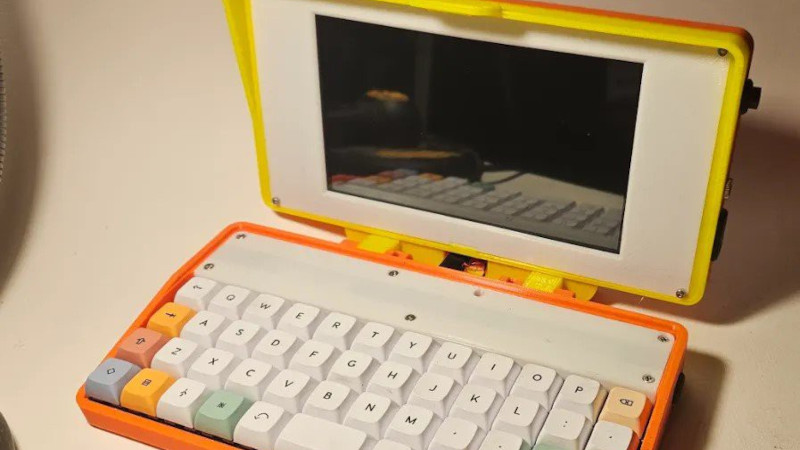We’ve seen many portable laptops using the Raspberry Pi series of boards in the decade-plus since its launch. The appeal of a cheap board that can run a desktop Linux distro without requiring too much battery is hard not to fall for. Over the years, the bar has been raised from a Pi stuck to the back of one of those Motorola netbook accessories, through chunky laptops, to some very svelte and professional-looking machines. A recent example comes from [Michael Mayer], whose Portable Pi 80 is a palmtop design that we’d be happy to take on the road ourselves.
At its heart is a Pi Zero 2, combining as it does a tiny form factor with the useful power of its Pi 3-derived processor. This is mated to a Waveshare 7-inch display, and in the bottom half of the machine sits a 40% mechanical keyboard. Alongside this are a pair of 18650 cells and their associated power modules. The little Arduino, which normally handles the keyboard, has been relocated due to space constraints, which brings us to the case. A project like this one is, in many ways, a task of assembling a set of modules, and it’s in the case that the work here really shines. It’s a 3D-printable case that you can download from Printables, and it’s very nice indeed. As we said, we’d be happy to use one of these.
Portable computing has come a very long way. Often the keyboard can make it or break it.
















In the spirit of constructive criticism I wanted to ask why pay for the keyboard PCB if one could just 3D-print the top plate and then wire the buttons manually, only to discover that the author provides this option with a top plate STL. Nice!
PCB is more rigid and holds better?
Thanks, that’s obvious in hindsight. I only 3D-printed small macro pads, so rigidity (or lack of thereof) was never an issue for me.
To called it Palmtop is a little stretch. It is about the size of a brick. Anyhow, thanks for the post.
Palmtop was a classification of PDA devices in the 90s with barely touch type sized keyboards and a clamshell style screen that closed over the keyboard.
Like many marketing terms, it oversells on the small size of the devices; it wasn’t intended to mean it could fit IN your palm literally. But it was definitely smaller than luggable portable PCs of the time.
Indeed, I’d say this fits that term better than any other. It is a bit small and way too chunky to be the thin’n’light or netbook yet way too small really to be any variety of normal laptop. Right about the same space the Palmtops fitted.
Though if it wants to create a whole new category I’d be fine with that – micro luggable being my suggestion as it has the HID quality of a luggable PC but in micro size.
A laptop cannot fit on a single lap either. Most palmtops could rest on two palms so it doesn’t even seem that ridiculous of a name, even if using them in that manner doesn’t make any sense. Although, the thought of calling over a friend and asking them to hold out their palms on a table then placing your tiny computer on them and starting to work away is humorous to me.
Beautiful keyboard, I appreciate that! Its not that difficult to make a custom keyboard for a particular form factor. Its worth the effort though, since it looks and feels much, much better than small off-the-shelf bluetooth keyboards
I was dragged into the world of mechanical keyboards a few months ago and I don’t think I can go back now
Good headline! No click-bait, and nice alliteration!
This is a really fun design, and shows how someone can provide their own build for their use case, then share it with others. Michael has shared photos as he’s built it, and it’s been fun to see the progress along the way.
I’m still waitin for a Palm type input device, where you draw the characters. It is a lot better than normal QWERYY in a small format device.